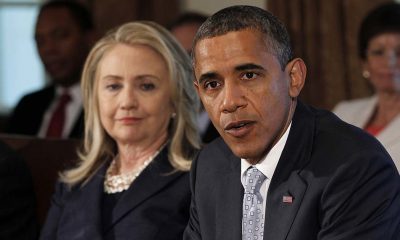World
Patient with Ebola symptoms being monitored in New York

New York: A person showing symptoms of Ebola has been subjected to medical tests at a New York hospital, after returning from the Ebola-hit country of Mali.
The patient, who has not been publicly identified, has been put in quarantine in New York’s Bellevue Hospital, according to official sources.
Medical personnel are performing tests to determine if the patient has Ebola and the results are expected soon, an official statement said Thursday.
Meanwhile, authorities Wednesday confirmed that the tests for Ebola performed on a woman who died Tuesday in New York, after arriving from Guinea-Conakry, had turned out to be negative.
The woman had arrived in New York 19 days ago from the West African nation, which is one of those that have been most severely affected by the Ebola epidemic. She apparently died of heart attack.
The only Ebola case diagnosed so far in New York was that of Craig Spencer, who had been working in Guinea from mid-September to mid-October.
After experiencing symptoms and testing positive for Ebola, Spencer was pronounced fully cured and released on Nov 11 from the hospital where he had been quarantined and treated.
Prior to that, other cases, where people have displayed Ebola-like symptoms had arisen in New York, but all of those patients tested negative for the deadly virus.
About 300 people deemed to be at risk of having been infected with Ebola are currently being monitored in New York to determine if they develop symptoms of the disease.
Ebola is a disease caused by the Ebola virus. Symptoms of the disease typically start between two days and three weeks after contracting the virus.
In the beginning, the symptoms may range from fever, sore throat, muscle pain, and headache.
Then, vomiting and diarrhea usually follow, along with decreased function of the liver and kidneys. Some of those affected may also begin to bleed both internally and externally.
World
Lockdowns in China Force Urban Communities to Defy Censorship and Vent Frustration Online

Shanghai’s rich middle class is leading a wave of online dissent over the strict and prolonged lockdowns imposed in various parts of the country. Chinese internet censorship is struggling as patience is wearing thin in many urban centers, coming up with creative forms of online protests.
Social Media Posts Revealing Lockdown Tension in Shanghai
Drawn-out lockdowns are nothing new in China as authorities insist with the nation’s zero-Covid policy since the start of the pandemic. Currently over This time around, however, metropolitan areas like Shanghai are increasingly difficult to keep quiet, given that its more than 25 million residents have seen weeks of total isolation along with food shortages and many other service interruptions.
Dozens of towns and reportedly over 300 million Chinese citizens have been affected by lockdowns of different severity. As expected, urban netizens have been most outspoken over their difficulties by finding creative ways to get around state censorship and bans placed on topics, news comments and spontaneous campaigns.
Shanghai residents have been using mobile proxies and hijacking seemingly unrelated hashtags to talk about healthcare issues, delivery failures and the overall severity of their situation. The “positive energy” that the Chinese government wants to transmit during the recent prolonged series of lockdowns does not come naturally to those counting food supplies and online censors are working hard to filter words, trending topics and undesired social media sharing.
WeChat groups and message threads are under constant monitoring. Posts questioning the zero-Covid approach have been quickly deleted, including by leading Chinese health experts like Dr. Zhong Nanshan. Video footage is soon censored and protests and investigations are quickly made to disappear.
Where this has not worked, officials have exposed banners with warnings and outright threats like “watch your own mouth or face punishment”, while drones have been patrolling the city skies. Yet, if anything, this has led to further tensions and unspoken confrontation with Shanghai’s educated and affluent middle class.
Creative Online Solutions Harnessing Civic Energy
Announcements by Chinese social media that they would be publishing the IP addresses of users who “spread rumors” have not helped either. Tech industry research has shown that much of Asia’s tech-savvy population has a habit of using mobile proxies and other privacy tools, quickly finding workarounds to browse the internet freely and talk to the world about the hottest topics.
The sheer volume of forbidden posts is already a challenge for the very censorship system, experts explain. Unable to track all trending hashtags, state workers overlook topics that speak about the US, Ukraine or other popular news. Linking human rights elsewhere to their situation, Chinese online dissidents establish their informal channels and “hijack” the conversation to share personal or publicly relevant information about the Covid suppression in their town.
Sarcastic and satirical posts still dominate. Others hope to evade the censors by replacing words from famous poems or the national anthem. One thing is certain – social media, when harnessed with the right creativity, has proven its ability to mount pressure on the government in even some of the most strictly controlled tech environments like China.























